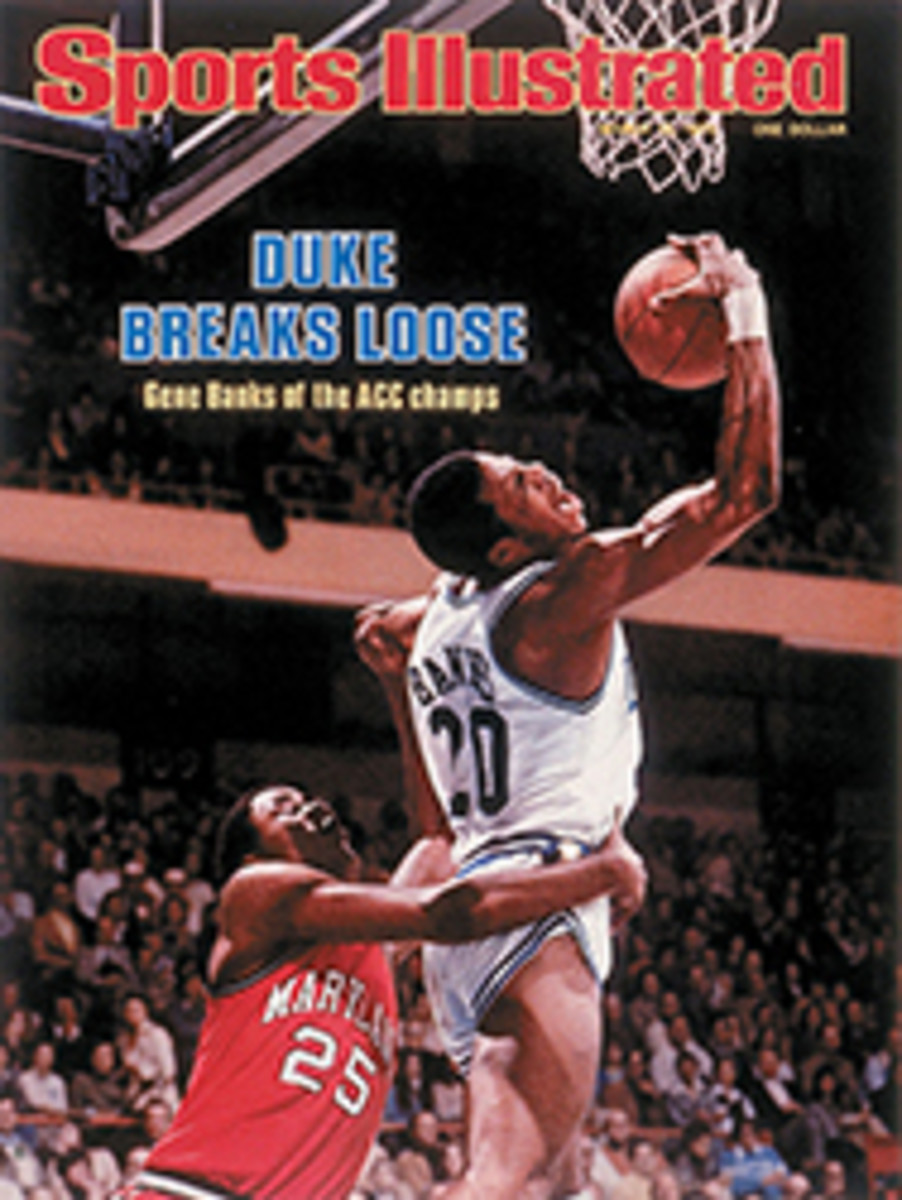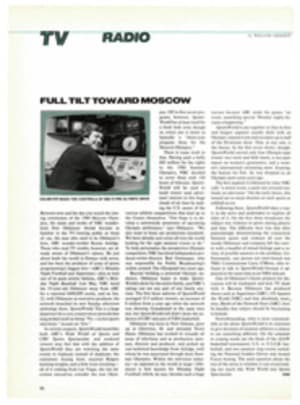
THE SUBJECT OF BIORHYTHMS PUT ONE FAN'S EMOTIONAL CURVE AT A NEW LOW
I knew I was in trouble as a sports fan when I saw a newspaper article last fall about Chris Evert's biorhythms. It ran on the morning of the women's tennis finals at Forest Hills, and in its first paragraph expressed doubts about Chris' chances "because her biorhythms are changing for the worse."
The article went on to explain that biorhythms are separate physical, emotional and mental cycles—of 23 days, 28 days and 33 days, respectively—that are supposedly determined at birth and may affect a person's performance on a given day. The biorhythm chart compiled for Chris showed that her physical curve had just shifted from "recharge" to "lower" and her mental state from "high" to "change."
Well, I had seen the word "biorhythms" before—it's one of those pseudo-scientific terms that hover in the American air—but I had never seen it in the sports pages, and I never wanted to see it there again. I suspected, however, that this was an impossible dream—and it was. Since that portentous morning I have been made privy to the metabolic secrets of football players, basketball players, baseball players, coaches and even racehorses.
I've been told that I will be foolish to go to the ball park this summer without a copy of Bernard Gittelson's Biorhythm Sports Forecasting, which lists the birth dates and biorhythm codes of 5,000 athletes. If I see one of my heroes striding confidently to the plate—bases full, two out—when the book says he is having a "critical" day, I should go for a beer and spare myself the anguish of watching him pop up to the infield.
I'm not saying that I don't believe in biorhythms. All of us have days when we "get up on the wrong side of bed" (I keep my bed away from the wall for just this purpose) and other days when we could "lick our weight in wildcats" (people are always turning up at my door with 135 pounds' worth of wildcats). I'm willing to believe that physical, emotional and mental energies rise and fall with a certain regularity.
I read last fall that Jim Marshall, the Minnesota Vikings' defensive end, had a triple critical day (all three cycles bobbing around zero) when he made his inelegant wrong-way run in 1964. Conversely, I saw that Walter Payton of the Bears was "riding a triple high" when he set his NFL single-game rushing record of 275 yards against the Vikings. I also remember a chart that ran in The New York Times last fall showing the biorhythmical status of Woody Hayes, Ohio State's football coach, on the afternoon his team was losing to Michigan and he punched a TV cameraman. Woody was at the bottom of what the chart called his "intellectual curve," and his emotional curve was veering downward. Of course, a skeptic might say that Woody was just acting normal.
Still, I'm not knocking biorhythms. I just don't want to hear about them. If I see a football player running in the wrong direction I'll know he's having a bad day. I'd rather not consult the code book and spend the whole afternoon waiting for Joe Triple Critical to grab a fumble and sprint toward his own goal line. I want to enjoy my sports for the beauty of their execution and for whatever surprises they may bring.
This is no longer easy. Biorhythms are only the latest of the new barriers between me and the game. There is also medical news to be processed. Today nobody can hope to be a sports fan unless he has a working knowledge of orthopedic disarray. I'm also not ready for all the high finance that is thrust at me. Since baseball's hired hands were legally sprung from bondage I have often opened the sports section and thought I had stumbled into the business pages by mistake. And I resent the emotional squalor. I was astonished to read that George (Boomer) Scott of the Red Sox told Manager Don Zimmer that he couldn't play because he was "not mentally prepared." Well, Boomer, neither am I. I'm not mentally prepared to keep track of who isn't mentally prepared.
Add biorhythms to this bubbling vat of broken bones and swollen wallets and bruised psyches and we are all in trouble. I see baseball managers hunched over their players' charts ("Say, Harry, you got today's biorhythm codes?") studying the upward and downward curves, accentuating the positive and benching the negative. I can hear the pre-game TV interview:
"Why did you decide to go with Catfish this afternoon instead of Guidry?"
"Ron has a double critical today but he should be ready by Thursday. He's entering his positive phase tonight."
"How about Messersmith?"
"Andy's above the baseline in all three cycles, but I want to hold him till tomorrow when his emotional curve is higher."
"So Catfish looks the strongest?"
"Definitely. You can see for yourself in Gittelson's book."
"Last time he started he didn't have good stuff."
"Yeah, I blame myself for that. I knew that his physical cycle had shifted down from recharge. But his mental cycle was high."
"So you're looking to see a good fastball out there this afternoon?"
"I definitely am."
"How about his curve?"
"They're all up."
I also expect to be surrounded by this kind of talk at the ball park.
"Why'd he hold up at second? He could have made third easy."
"The guy's at zero on his emotional curve. There's no way he's going to try for third."
"Martin should take him out of the lineup when his bios are bad."
"So who else should he play? Billy's doing his best with the biorhythms he's got. There's no better manager when it comes to platooning your different cycles."
As it turned out, Chris Evert won at Forest Hills last fall despite the forecast of biorhythmical doom. And I'll bet Babe Ruth hit at least half of his 60 home runs in 1927 on days when his cycles were down. As for Dizzy Dean when he won 30 games in 1934, I don't even want to think about his mental curve. Did Ted Williams always feel great? Did Joe DiMaggio?
Was Reggie Jackson riding a triple high when he hit three home runs in the last game of the World Series? My guess is that he wasn't. I could look it up, if I had Gittelson's book. But I don't. And I'm not going to get it.

